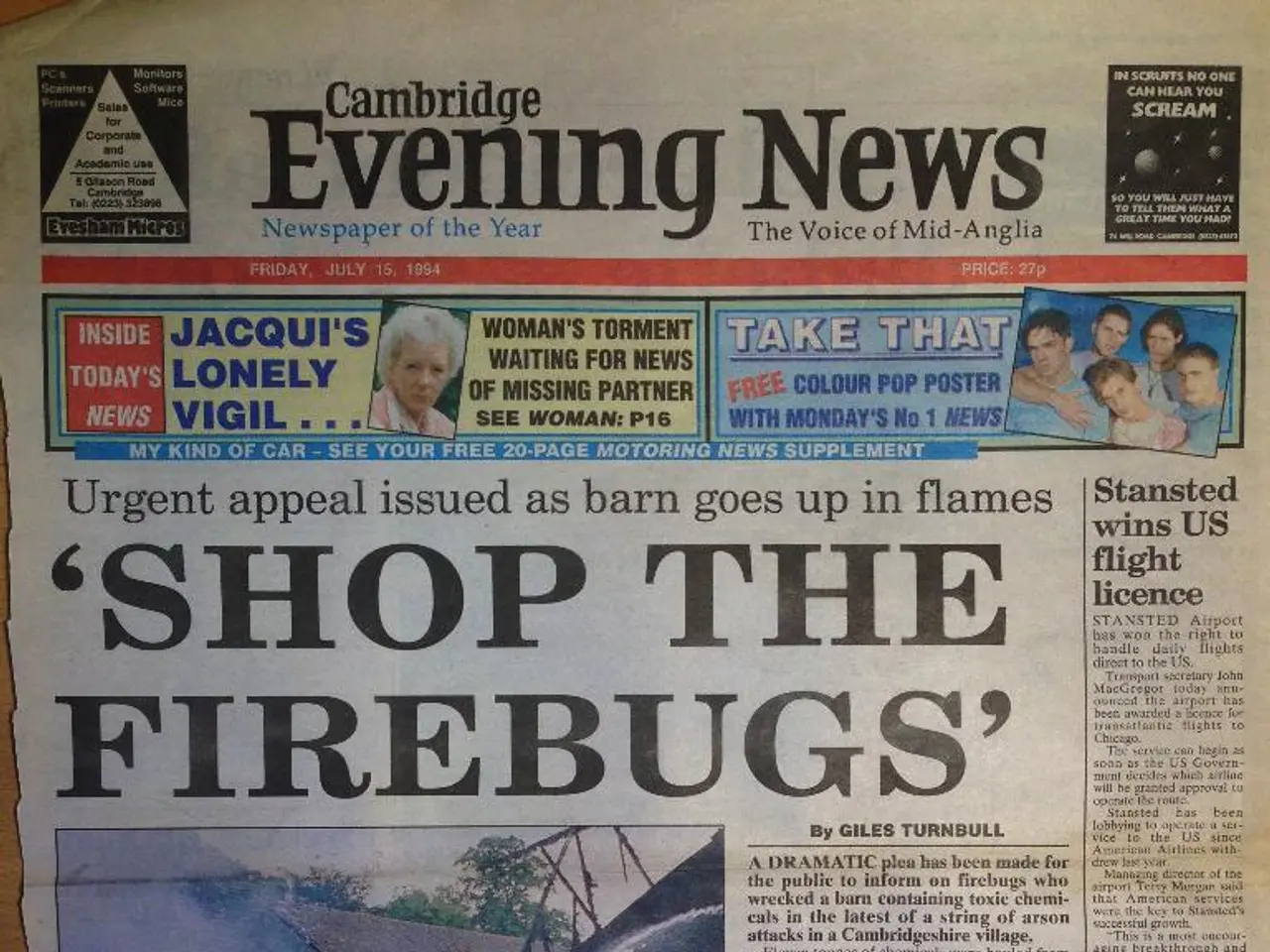NYC teenagers have taken up a new pastime: writing for the school newspaper.
In the bustling city of New York, a new initiative called Journalism for All is making waves. This partnership between a city nonprofit, an audio journalism site, and the City University of New York's Craig Newmark Graduate School of Journalism is aimed at revitalising student journalism and fostering a new generation of young writers.
At the heart of this revival is The Pacer, the student newspaper of Pace High School. Ally Dolores, a seventeen-year-old senior, serves as the editor-in-chief of The Pacer. Katelynn Seetaram, another seventeen-year-old student at Pace, initially didn't take to journalism but continued after winning an award for a sports story. Now, she shares editor duties with Ally.
The decline in student newspapers is a nationwide phenomenon, often attributed to smaller budgets and audiences more interested in digital content like TikTok. However, The Pacer is bucking this trend. This year, it has covered the success of the girls' and boys' basketball teams, reviewed Taylor Swift's latest album, offered criticism of cancel culture, and published a news story about flooding damage in the school gym.
One of the ambitious recent stories published by The Pacer detailed the experiences of Pace students who have endured attempted physical and sexual assaults in the blocks surrounding the high school. This courageous reporting is a testament to the power of student journalism in giving voice to the voiceless.
David Rohlfing, a former teacher at Pace High School, revived The Pacer after witnessing its decline and observing its potential to reconnect students during a storytelling project. His efforts have paid off, as The Pacer is helping students regain the communication and social skills they lost during a year of pandemic-era remote learning.
The success of The Pacer has led to the expansion of Journalism for All. This fall, the initiative aims to train teachers in thirty high schools around the city to lead journalism classes and start student newspapers, using $3 million in funds. Lunx Girgado, an English literacy teacher at ATLAS High School in Queens, is one such teacher who has signed up for training, believing that her students, many of whom are refugees from Venezuela, need an outlet to tell their own stories.
The group Press Pass NYC contributed to the relaunch of The Pacer. Elsewhere in the city, eighteen-year-old Fredlove Deshommes launched a podcast at the Urban Assembly School for Law and Justice to tell the story of a senior's arrest and avoid harmful stereotypes about students of colour in mainstream media.
The revival of student journalism is not limited to New York City. Nonprofit newsrooms and colleges in California, Texas, and Illinois are launching programs to revive student journalism, hoping to replicate the success of Journalism for All. Liza Greenberg, editor in chief of the school paper at the elite Bronx High School of Science, advocates for these efforts, believing that student journalism can combat disconnection and lack of reading among students.
From 2011 to 2021, the proportion of US public high schools with a print or online student newspaper dropped from 64 percent to 45 percent. However, with initiatives like Journalism for All, there is hope that this trend can be reversed. The fact-finding and teamwork of a teenage newsroom might be a solution to engage students and prepare them for citizenship in a deeply divided nation.
Moreover, Journalism for All's training materials and curriculum will be made available for free to facilitate the spread of student journalism programs in other cities. As these programs grow, so too will the voices of young people, empowering them to tell their own stories and make a difference in their communities.
Read also:
- Setting Up and Expanding Operations at a Soil Blending Facility
- Surveying the Scene: Legality, Drones, and American Anti-Terror Strategy
- Regional University's healthcare system strengthened through collaborative partnership with Chancellor Dr Fiona Hill
- Reminisced University Trustee David M. Flaum as a 'fervent advocate' for the University and community




